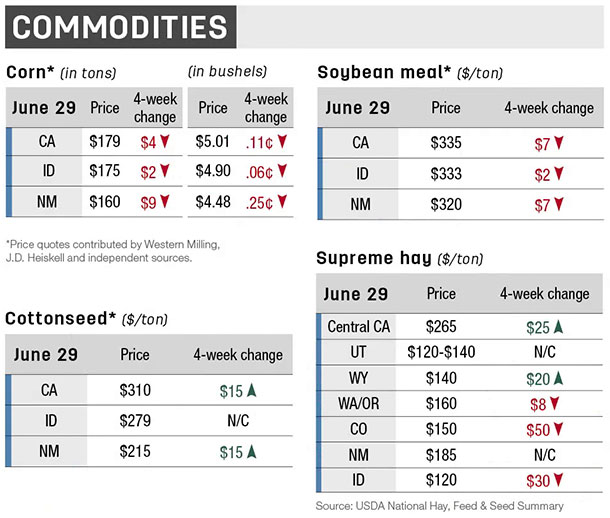As the grazing season progresses, cattle use of riparian areas will increase due to more appealing grazing conditions (i.e., forage quality and quantity). Overgrazing riparian areas during the summer (hot temperatures and lack of moisture) can have detrimental impacts on forage. Proper management can help maintain the health of riparian areas, which provide wildlife habitat, high-quality forage and clean water throughout the year. Since grazing management is so critical to your bottom line, here are a couple of considerations to help set you up for success.
1. Consider methods to moderate use: Good upland management is important to riparian management. Utilizing techniques to draw cattle out of these sensitive areas is key. Seeding upland pastures with high-quality forage can help attract cattle away from riparian areas.
Additionally, strategic placement of supplement (i.e., salt, mineral and protein) can be an inexpensive method to influence cattle grazing distribution upland. Consider developing additional water sources on upland pastures to mitigate cattle congregating in riparian areas.
2. Consider avoiding stressful conditions: Limiting stress is vital to maintain riparian health. Avoid grazing the same riparian area during the same time, year after year, to allow vegetation to recover properly. In a pasture with both upland and riparian areas, graze when both areas have good-quality forage. When forage quality in upland pastures is poor, there will be increased use and potential damage of riparian areas.

Often riparian areas are the only source of shade and water. It is recommended to avoid riparian areas during hot months. If grazing occurs, keep the duration short to minimize impact. Try to avoid grazing riparian areas during times of high precipitation, as the area will be more susceptible to trampling and soil compaction. Watch for warning signs of degradation. Highly degraded areas, especially in fragile environments, will need cattle exclusion to recover.
3. Consider monitoring to achieve objectives: Frequent monitoring and accurate record-keeping of riparian areas provides a more complete understanding of ecology and health. Records related to growing conditions, grazing times and unusual events (i.e., floods) help inform future decisions.
Monitoring (i.e., photo points or established transects) to track changes over time can validate which grazing tactics are influencing riparian health. The need for proactive management is the common link among each consideration. Maintaining riparian health requires greater management. However, healthier pastures lead to increased productivity and profitability.









